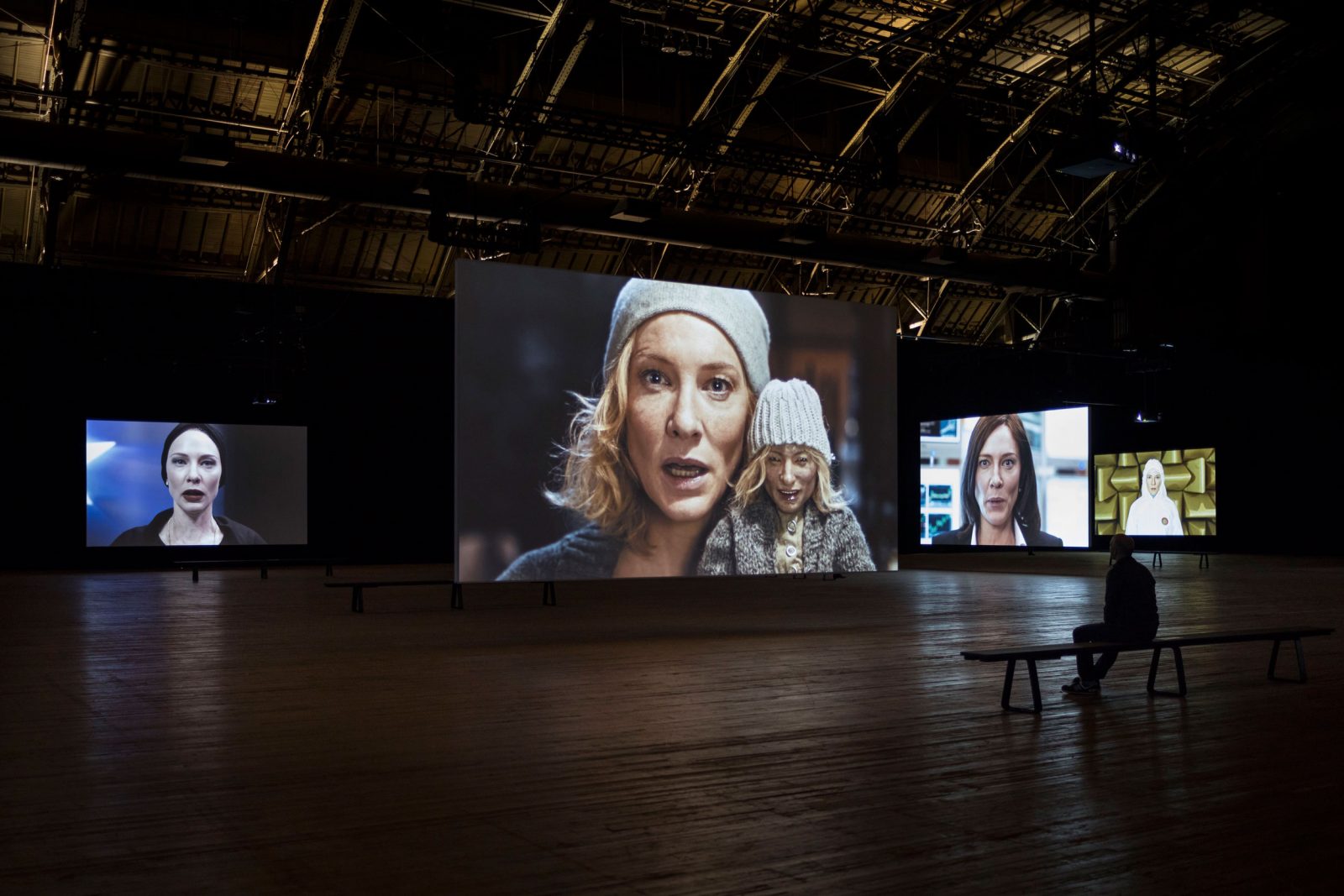Manifesto, one of German artist Julian Rosefeldt’s most internationally renowned video works, ran at the Musée d’art contemporain de Montréal (MAC) from Oct. 20 to Jan. 20. The work is comprised of 13 videos—each showcasing Australian actress Cate Blanchett assuming different roles, including that of a teacher, a homeless man, and an anchorwoman. During each scene, Blanchett presents multiple manifestos corresponding to a specific modernist avant-garde artistic movement, such as dada, futurism, and fluxus. An artistic manifesto is a statement of purpose, and, while the term is often associated with political movements such as Marxism, manifestos were similarly employed among the artistic movements that emerged in the twentieth century. Manifestos organized a movement’s ideology and allowed lay-persons to understand the its guiding artistic objectives.
In Manifesto, Rosefeldt explores history and temporality through video, a medium associated with technological advancement, thus allowing him to present the manifestos to a contemporary audience. The exhibition examines current receptions of historical manifestos, looking at how the works change once extracted from their original contexts. Rosefeldt also draws on performance art in the 13 videos; while the word ‘performance’ suggests live-action art that cannot be reproduced, Manifesto establishes a unique relationship between video and viewer by allowing Blanchett’s performances to loop infinitely.
“[E]xploring the powerful urgency of these historical statements, which were composed with passion and conviction by artists many years ago, Manifesto questions whether the words and sentiments have withstood the passage of time” wrote Rosefeldt in a statement for the MAC.
While, at first, the settings and characters appear to hold only aesthetic appeal, listening to Blanchett read each manifesto demonstrates the ideologies behind the visual content. In the pop art video, Blanchett plays a mother leading her southern family in saying grace while reading Claes Oldenburg’s text, “I am for Art.” While pop art seems inseparable from rows of grinning Marilyn Monroes or Lichtenstein’s comic book characters, the video draws on pop art’s use of the everyday material and manipulation of items, such as the Campbell’s soup can, that appear in the average American households. In the video devoted to Surrealism, Blanchett plays a puppeteer crafting a puppet in her own likeness, echoing the absurdity of works by canonical artists such as Salvador Dali or René Magritte. In the video for abstract expressionism, Blanchett is cast as a CEO at a party reading manifestos by artists Barnett Newman, Wyndham Lewis, Wassily Kandinsky, and Franz Marc, contrasting the sterile business environment with the dynamic and spontaneous quality of expressionist art.
Rosefeldt’s Manifesto provokes commentary through audience reflection. Rather than using the elaborate scenes to deconstruct the manifestos’ contents, Rosefeldt presents the 13 scenes in such a way that the audience is encouraged to determine for themselves how Blanchett’s characters and environments connect to each movement and to decide whether the artists’ statements remain provocative or whether time has rendered them archaic. The videos are at once utopian and dystopian; it becomes difficult to settle on a single emotional response, as the videos each employ starkly contrasting imagery. Rosefeldt uses Blanchett’s background in acting to its fullest extent: She employs different accents, appearances, and mannerisms within each video. Despite the distracting melee of sounds playing throughout the room, Rosefeldt coordinated the videos to align once every 10 minutes—at that moment Blanchett’s face dominates every screen as she reads from the respective manifestos.
While integrating manifestos into video performances at times appears forced, Manifesto is notable for its attention to detail and the history the exhibition honours. While artworks often deploy symbolism or draw influence from the art of the past, Rosefeldt’s work is an explicit tribute to evolving artistic movements and how they engage with the present. Despite demanding that the viewer take the time to watch each 10 minute video to gain a greater understanding of each movement, Manifesto delivers a choreographed and visually engaging video art installation.









